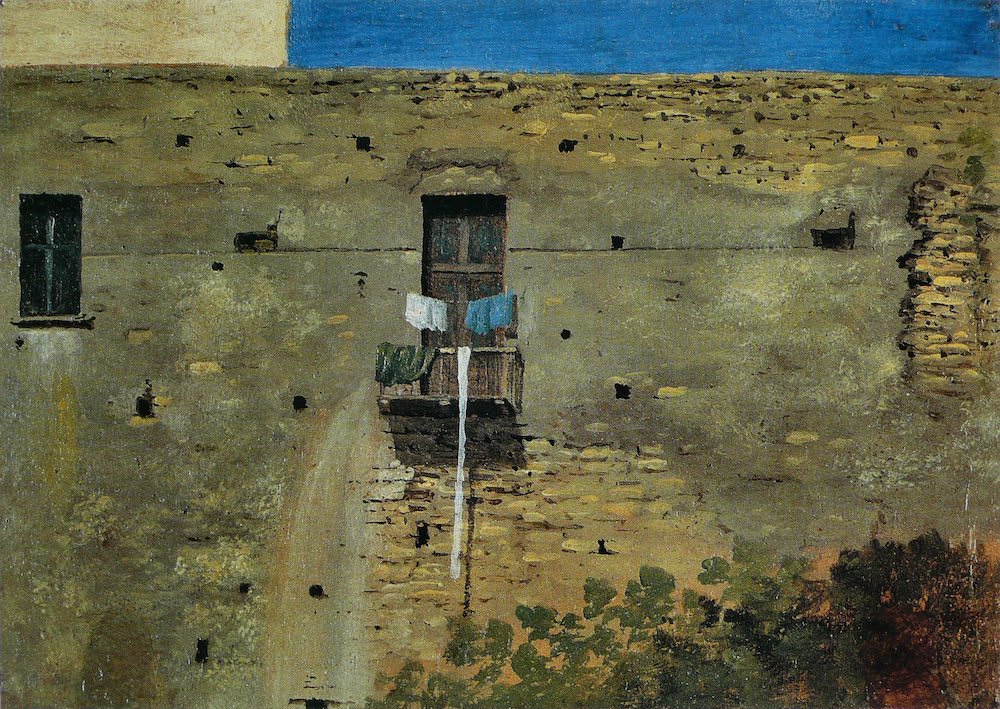Interlude - Thomas Jones at the National Gallery
This fascinating and tiny painting, 16cm across and 10cm high, was usually one of my stops when I dropped in to the National Gallery. I must have visited the gallery hundreds of times over the years, and therefore must have seen this painting dozens of times, back when I had the option of doing so.
The title is admirably descriptive: Jones paints, in oils on paper, a worn out wall, lit by strong sunshine. It’s patched by newer bricks, pockmarked by scaffolding holes and swelled by damp. Little studs of vegetation poke out, with a shadowy climbing plant reaching into the bottom of the frame. There’s a beautiful, truncated strip of deep blue sky up above, which must have been such an unfamiliar but exciting sight for Jones, who was born and died in Wales, spending just a few years in his twenties travelling in Italy.

It must have been close to midday on a summer day, judging by the angle of the shadows and the intensity of that sky. Jones probably painted it from a window or from the roof of his temporary home, closely observing the home of his neighbour across the street: their colourful linens, hung out to dry, and the watermark, arcing out from the balcony down the wall, of the contents of their chamber pots. It must have been pretty smelly out there in the heat.
Jones was well-known in his lifetime for his more conventional portraits and landscapes, which bear the firm mark of his time. Those works don’t stick in my mind: I can’t tell my Gainsboroughs from my Romneys, sue me. But he’s got a justfiably big reputation these days for these small works on paper, painted for his private enjoyment and never exhibited.
This summer scene is strangely timeless: that strip of white linen, dangling down from the balcony, could have been painted yesterday. But it’s entangled in my mind with a similar swatch of material, painted a hundred years before by Velazquez in his View of the Garden of the Villa Medici. That work was another personal pleasure for its artist, not for public consumption. They testify to a private freedom, closed off from the world, just like the shutters blocking the sun in the door and window on that wall in Naples.
When I next have the chance to pass through the portico on the north side of Trafalgar Square, and take my hundred-and-somethingth visit to the National Gallery, I’ll give Whistlejacket and the Hay Wain a miss, and spend some time with this shabby little wall, golden in the sun, reunited again.
A Wall in Naples is in the permanent collection at the National Gallery, London